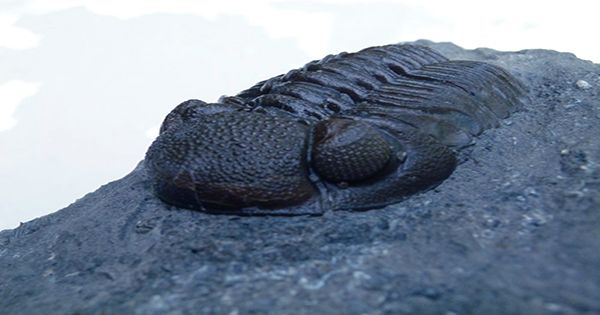A 390 million-year-old trilobite has revealed some unsettling truths about the enormous marine arthropods, including the fact that they have eyes unlike any other animal ever discovered. What appeared to be two independent eyes were actually enormous systems of hundreds of tiny lenses that formed their own mini-eyes, as scientists would predict. That is to say, these creatures had a colossal number of eyeballs.
Behind each lens, a sequence of facets anchored by photoreceptors and a network of nerve cells captured light from each before sending it down a primary optical nerve to the brain, resulting in an altogether distinct method of perceiving the world. The findings reported in the scientific journal Scientific Reports.
The researchers made the discovery after studying a series of X-ray pictures of the unusually well-preserved fossil taken in the 1970s. The photos, taken radiologist and amateur paleontologist Wilhelm Stürmer, showed clear filaments under the eyes, which were suggested to be nerves, as well as a series of sub facets (small areas of photoreceptors that make up a compound eye, such as the tiny hexagons you can see on a fly’s eye) beneath each eye, which contributed to the overall structure. Scientists dismissed this explanation at the time. Scientists can now see that Stürmer was correct, 40 years later, thanks to current technology.
The fossil belongs to the Phacopinae suborder of trilobites. While most trilobites have eyes that are similar to those of a modern, fly – hexagonal facets make up a huge compound eye with eight photoreceptors – this suborder takes a different strategy. Each compound eye has 200 lenses that spread out for further than other compound eyes, and each sub-face has six sub-facets. In a statement, main researcher and zoologist Dr Brigitte Schoenemann said, “Each of these eyes consists of roughly 200 lenses up to 1 mm [0.04 inches] in size.”
“Each of these lenses has at least 6 facets, which when combined form a miniature compound eye. In one eye, we have around 200 compound eyes (one under each lens).”
All of these factors combine to create a “hyper eye,” which may have given Phacopinae an advantage over other animals. Their numerous lenses and complex visual systems may have enabled them to detect minute changes in brightness in low-light situations, providing them an advantage when hunting food (such as hard-shelled creatures that they crushed and stabbed to death with their legs) or hiding from larger predators. It is also likely that other hyperactive eye areas served various purposes, including contrast enhancement. Stürmer, who died in the 1980s, would never receive the recognition he earned for identifying a distinctive eye structure 40 years before others could.
















